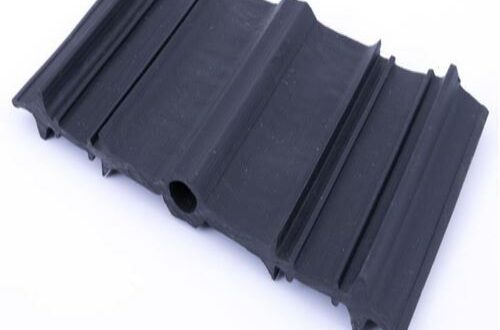Overview of foamed rubber
In 1856, Britain began industrialized production of sealing products, sponge rubber, marking the birth of foamed rubber products. Foamed rubber is a composite material composed of gas generated by the decomposition of the foaming agent, resulting in a large amount of gas penetrating through the rubber matrix and making the rubber produce a microporous structure.
In the 1930s, the rebates company prepared rubber foaming materials by compressing nitrogen. The products prepared by this method firmly occupied the foamed rubber market in the following decade. In 1940, DuPont produced an organic foaming agent azoamino acid benzene (DAB).
Because the foaming material produced by DAB has excellent performance and process, it has attracted extensive attention from the outside world. However, DAB is toxic, and developing low pollution products is the focus to meet the market. The invention of azobisisobutyronitrile (abin) is undoubtedly an innovation in the field of foamed rubber.
The nonpolluting chemicals repre sented by abin have come out one after another, which also marks the gradual maturity of the foamed rubber sealing products industry. In recent years, high elastic products such as synthetic rubber and rubber plastic blends are also widely used as foaming materials, which greatly broadens the application range in this field.
Preparation process of foamed rubber
The chemical foaming agent decomposition method is the most used method for preparing foamed rubber. It uses the gas generated by the thermal decomposition of a chemical foaming agent to form a bubble structure in the rubber.
The process is easy to operate and has high safety. The chemical foaming agent decomposition method can be divided into the free foaming method and the molding method.
The free foaming method, also known as the Moldless vulcanization method, is often used to prepare long strip rubber sealing products. This method is characterized by foaming at the same time as the rubber vulcanization process. This process has strict requirements for compatibility between the foaming temperature of the foaming agent and rubber vulcanization temperature.
The molding method is to place the compound with a foaming agent in a closed mold and apply pressure while heating. At this time, the vulcanizate begins to cross-linked, and the foaming agent also decomposes to produce gases.
Under high pressure, these will easily dissolve in the colloid. After pressure relief, the holes formed by the gas in the rubber matrix will further grow, to obtain a higher rate of foamed rubber. And in China, Suconvey Rubber manufactures many types of Sponge Foam Silicone Rubber Products.
Development status of rubber sealing products
Rubber sealing products are often used as accessories for sealing products, which are widely used in rubber products. Due to the particularity of the working environment of the sealing system, rubber sealing products play a key role in the safety performance and service life of the sealed system.
The function principle of rubber sealing products is to use the good compression resilience and softness of rubber materials to make the rubber produce rebound force when under pressure.
Under the action of external pressure, rubber as a sealing material is integrating; with the sealed parts to block the flow of the sealed medium, to seal all kinds of liquids and gases.
Rubber sealing products have a wide range of applications, including general rubber sealing products used as the basis for isolating water and air (such as О type sealing ring and thermal insulation layer), also including rubber sealing products used in a specific environment (such as rubber sealing products for automobile engine , rubber sealing products for high-speed railway, etc.).

The different application
Due to the different application fields, places of use, and degree of attention of various rubber sealing products, the degree of standardization is also different. For some rubber sealing products with broad application fields, close to life, and widespr concern. China has been long formulating corresponding national standards or industrial standards; and these standards are also constantly revised.
There are also some products with narrow application scope and low attention. However, due to the rapid development of the industry in recent years, such as metal composite sealing materials, the state is also accelerating the formulation of its industry standards.
There are also some sealing products used in high-end fields, which have not received widespread attention because of their relatively narrow scope of application. Manufacturers can only rely on enterprise standards to organize production and control quality; For some emerging industries, their national standards and industry stand ards still need to formulated.
Conclusion
The material requirements and selection of rubber sealing products will be changed according to the nature of the medium, service environment, and service life. Usually, traditional synthetic rubber such as nitrile rubber, fluoro rubber, ethylene-propylene rubber, and silicone rubber are the main raw materials for manufacturing rubber sealing product.
In recent years, with the rapid development of the sealing industry; new processes and materials are also being develope rapidly. Although some new elastomer materials have been well apply in some fields. Such as aerospace and the national defense industry, traditional synthetic rubber materials are still the leading materials of sealing products and have an irreplaceable position.
 HammBurg Be informed with latest news, reviews, entertainment, lifestyle tips, and much more.
HammBurg Be informed with latest news, reviews, entertainment, lifestyle tips, and much more.




